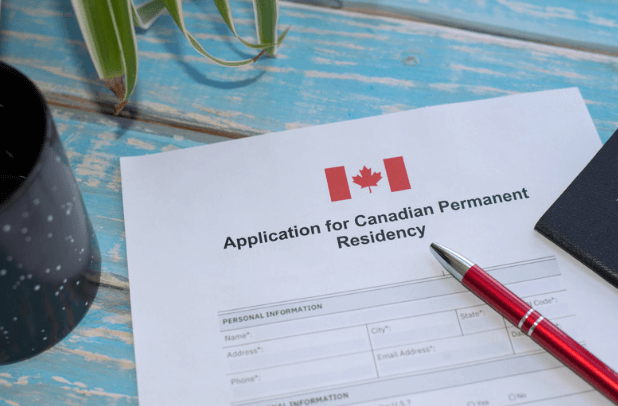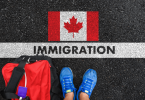Canada is one of the most popular destinations for immigrants who want to enjoy a high quality of life, a diverse and tolerant society, and a stable and prosperous economy. Canada welcomes thousands of permanent residents every year through various immigration programs, such as Express Entry, Provincial Nominee Program, Atlantic Immigration Pilot, Rural and Northern Immigration Pilot, and more.
If you are interested in becoming a permanent resident of Canada, you may be wondering how to apply for this status and what are the requirements and benefits. In this blog post, we will provide you with a comprehensive guide on how to apply for permanent residence in Canada, based on information from the official websites of the Government of Canada and other reliable sources.
What is Permanent Residence in Canada?
Permanent residence is a legal status that grants you the right to live, work, and study in Canada indefinitely, as long as you meet the residency obligations. You can also apply for Canadian citizenship after living in Canada for three years as a permanent resident. Permanent residents are not Canadian citizens, but they enjoy many benefits, such as:
- Access to public health care and social services
- Protection under Canadian law and the Canadian Charter of Rights and Freedoms
- Eligibility to apply for Canadian citizenship after meeting the criteria
- Ability to sponsor eligible family members to join them in Canada
Permanent residents also have some responsibilities, such as:
- Paying taxes and respecting Canadian laws
- Carrying a valid permanent resident card (PR card) or permanent resident travel document (PRTD) when traveling outside Canada
- Not voting or running for political office
- Not holding certain jobs that require a high-level security clearance
What are the Pathways for Permanent Residence?
Canada offers various pathways for permanent residence, depending on your skills, education, work experience, language ability, family ties, and other factors. Some of the most common pathways are:
Express Entry
Express Entry is an online system that manages applications for three federal economic immigration programs: the Federal Skilled Worker Program, the Federal Skilled Trades Program, and the Canadian Experience Class. These programs are designed for skilled workers with at least one year of work experience in Canada or abroad and meet the language, education, and other eligibility criteria.
To apply for permanent residence through Express Entry, you must create an online profile and provide information about your skills, education, work experience, language ability, and other factors. You will then receive a score based on the Comprehensive Ranking System (CRS), which ranks you against other candidates in the pool.
Every two weeks, the Canadian government issues invitations to apply (ITAs) for permanent residence to the highest-ranking candidates in the pool. The minimum CRS score required to receive an ITA varies depending on the number of candidates and invitations available. If you receive an ITA, you have 60 days to submit your complete application for permanent residence online.
The processing time for Express Entry applications is usually six months or less. You can check your application status online using your account. If your application is approved, you will receive a confirmation of permanent residence (COPR) and a permanent resident visa (if you need one). You must then travel to Canada and confirm your permanent resident status at a port of entry or a local immigration office.
Provincial Nominee Program
The Provincial Nominee Program (PNP) allows each province and territory in Canada to nominate immigrants who have the skills and experience to contribute to their economy and society. Each province and territory has its own PNP streams and criteria aligned with their specific needs and priorities.
To apply for permanent residence through the PNP, you must first obtain a nomination from a province or territory. You can apply directly to a PNP stream of your choice or by creating an Express Entry profile indicating your interest in a specific province or territory. If a province or territory nominates you, you will receive additional CRS points, increasing your chances of getting an ITA from Express Entry.
The processing time for PNP applications depends on the province or territory that nominated you and the federal government. You can check your application status online using your account. If your application is approved, you will receive a COPR and a permanent resident visa (if you need one). You must then travel to Canada and confirm your permanent resident status at a port of entry or a local immigration office.
Atlantic Immigration Pilot
The Atlantic Immigration Pilot (AIP) is a special program that helps employers in the four Atlantic provinces (New Brunswick, Nova Scotia, Prince Edward Island, and Newfoundland and Labrador) hire foreign workers and international graduates who want to live and work in the region. The AIP has three streams: the Atlantic High-Skilled Program, the Atlantic Intermediate-Skilled Program, and the Atlantic International Graduate Program.
To apply for permanent residence through the AIP, you must first obtain a job offer from an employer in one of the Atlantic provinces designated to participate in the pilot. You must also meet the education, work experience, language ability, and settlement plan requirements for the stream under which you are applying.
The processing time for AIP applications is usually six months or less. You can check your application status online using your account. If your application is approved, you will receive a COPR and a permanent resident visa (if you need one). You must then travel to Canada and confirm your permanent resident status at a port of entry or a local immigration office.
Other Pathways
There are many other pathways to apply for permanent residence in Canada, such as:
- The Agri-Food Pilot helps workers in the agri-food sector immigrate to Canada.
- The Caregiver Programs help foreign caregivers with work experience in Canada or abroad immigrate to Canada.
- The Economic Mobility Pathways Pilot (EMPP) helps refugees with skills and qualifications immigrate to Canada.
- The Home Child Care Provider and Home Support Worker Pilots help foreign workers who have work experience in Canada or abroad as home child care providers or home support workers immigrate to Canada.
- The Humanitarian and Compassionate Grounds, which help people who are already in Canada and have exceptional circumstances that warrant granting them permanent residence.
- The Permanent Residence Pathways for Hong Kong Residents help eligible Hong Kong residents with work experience or education in Canada or abroad immigrate to Canada.
- The Quebec Immigration Program helps people who want to live and work in Quebec immigrate to Canada. Quebec has its selection criteria and processes for immigrants, which differ from the rest of Canada.
- The Rural and Northern Immigration Pilot (RNIP) helps workers in various occupations immigrate to small and remote communities in Canada.
- The Self-Employed Persons Program helps people with relevant experience in cultural activities or athletics immigrate to Canada.
- The Start-Up Visa Program helps entrepreneurs with a business idea supported by a designated organization to immigrate to Canada.
- The Temporary Resident Permit Holder Program helps people who are inadmissible to Canada for various reasons but have a valid temporary resident permit immigrate to Canada.
- You can find more information about these and other pathways on the official website of Immigration, Refugees and Citizenship Canada (IRCC).
How to Apply for Permanent Residence?
The application process for permanent residence varies depending on the pathway you choose. However, there are some common steps that you need to follow:
Check your eligibility: Before applying for permanent residence, you must ensure that you meet the eligibility criteria for your chosen pathway. You can use the online tool on the IRCC website to find out which programs you may qualify for. You can also consult the instruction guides for each program to learn more about the requirements and the documents you need.
Gather your documents: Depending on the program you choose, you may need to provide various documents to support your application, such as your passport, birth certificate, education credentials, work experience certificates, language test results, police certificates, medical exam results, proof of funds, and proof of relationship. Ensure that your documents are valid, complete, and translated into English or French if they are in another language. You should also scan and save your documents in PDF format if you are applying online.
Pay your fees: Depending on the program you choose, you may need to pay various fees such as the processing fee, the right of permanent residence fee (RPRF), the biometrics fee, and the third-party fees for language tests, education credential assessments (ECA), medical exams, and police certificates. You can pay your fees online using a credit or debit card. You should keep your receipt as proof of payment.
Submit your application: Depending on your chosen program, you may need to submit your application online or by mail. If you are applying online, you must create an account on the IRCC website, follow the instructions to fill out the online form and upload your documents. If you are applying by mail, you must download and print the application package from the IRCC website and follow the instructions to fill out the paper form and attach your documents. You should also check the mailing address and the courier instructions for each program before sending your application.
Wait for processing: After you submit your application, IRCC will review it and check if it is complete and eligible. If your application is incomplete or ineligible, it will be returned to you without processing. If your application is complete and eligible, it will be processed according to the processing times for each program. During this time, IRCC may request additional information or documents from you or ask you to attend an interview. You can check the status of your application online using your account or by calling the IRCC call center.
Receive a decision: After processing your application, IRCC will send you a decision letter informing you whether your application has been approved or refused. If your application has been approved, you will receive a confirmation of permanent residence (COPR) and a visa (if applicable) or an invitation to confirm your permanent resident status online using the Permanent Residence Portal. If your application has been refused,
you will receive a refusal letter explaining the reasons for refusal and informing you of your options to appeal or reapply.
Conclusion
Canada is a great country to live, work, and study in. It offers many opportunities and benefits for immigrants who want to become permanent residents. However, applying for permanent residence in Canada can be a complex and lengthy process that requires careful planning and preparation.
If you need help with your application, you can consult an immigration consultant or a lawyer authorized to represent you. They can advise you on the best pathway for your situation, help you gather the required documents, and guide you through the application process.
If you have any questions or comments, please leave them below. We would love to hear from you!






